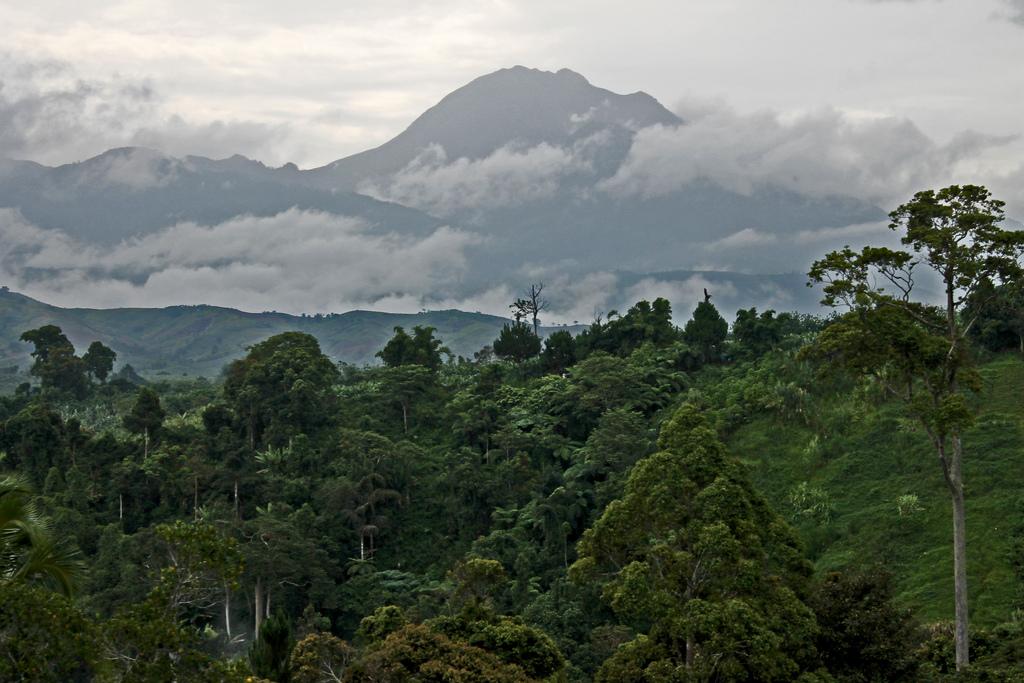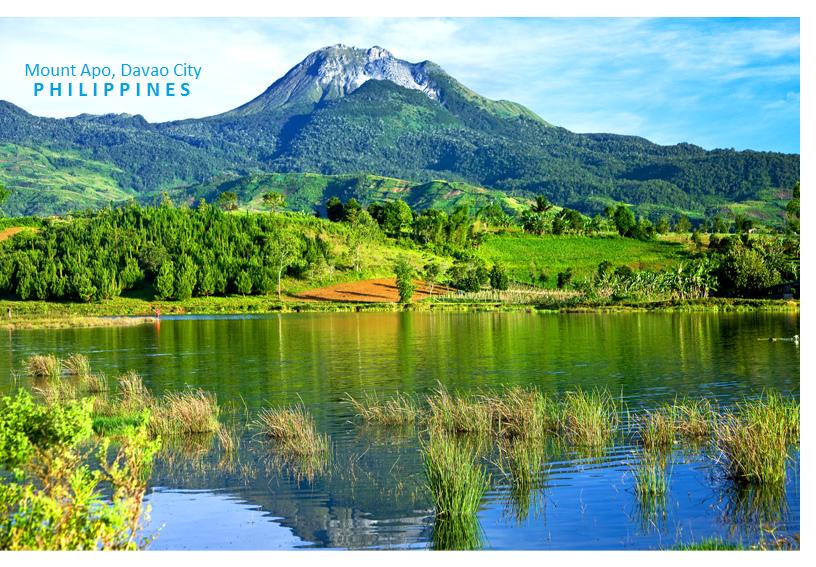
Mount Apo is a large solfataric, potentially-active stratovolcano in the island of Mindanao, Philippines. With an altitude of 2,954 metres (9,692 ft) above sea level, it is the highest mountain in the country and is located between Davao City and Davao del Sur province in Region XI and Cotabato province in Region XII. The peak overlooks Davao City 40 kilometres (25 mi) to the northeast, Digos City 25 kilometres (16 mi) to the southeast, and Kidapawan City 20 kilometres (12 mi) to the west.
Apo, which means "ancestor," is a flat-topped mountain with three peaks and is capped by a 500-metre-wide (1,600 ft) volcanic crater containing a small crater lake. The date of its most recent eruption is unknown, and none are verified in historical times.

The volcano is one of the most popular climbing destinations in the Philippines with the summit, on the average, takes two days to reach. The first recorded climb was on October 10, 1880, by a party led by Joaquin Rajal, then Spanish governor of Davao.
On May 9, 1936, Mount Apo was declared a national park with Proclamation no. 59 by President Manuel L. Quezon, followed by Proclamation no. 35 of May 8, 1966 then Proclamation no. 882 of September 24, 1996.[7] On February 3, 2004, the approval of Republic Act no. 9237 established Mount Apo as a protected area under the category of natural park with an area of 54,974.87 hectares (135,845.9 acres); with two peripheral areas of 2,571.73 hectares (6,354.9 acres) and 6,506.40 hectares (16,077.7 acres) as buffer zones, provided for its management and for other purposes.
Although declared a natural park, the current climbing trails are littered with rubbish by irresponsible climbers, opening paths for soil erosion across the already denuded mountain sides. Some mountain and social climbing groups conduct climbs after the Holy Week/Easter, the peak climbing season, to clean the affected areas.

The Department of Environment and Natural Resources (DENR) submitted Mount Apo on December 12, 2009 for inclusion in the UNESCO world heritage list. The mountain is considered by DENR as the center of endemism in Mindanao. It has one of the highest land-based biological diversity in terms of flora and fauna per unit area. It has three distinct forest formations, from lowland tropical rainforest, to mid-mountain forests, and finally to high mountain forests.
A portion of the eastern slopes are also within the scope of the UNESCO Hydrology Environment Life and Policy (HELP) Network. The Davao HELP Network is focused on building collaboration among watershed stakeholders.
The mountain is home to over 272 bird species, 111 of which are endemic to the area. It is also home to one of the world's largest eagles, the critically endangered Philippine Eagle, which is the country’s national bird.
Mount Apo is an excellent source of geothermal energy. Located in Barangay Ilomavis, Kidapawan City, North Cotabato is the Mindanao Geothermal Production Field with a power output of 106 MW, currently the only power plant of its kind in Mindanao.
The Philippine National Oil Company geothermal plant supplies electricity to Kidapawan and its neighboring provinces, its completion boosted the city's economy.
Six indigenous groups, the Manobos, Bagobo, Ubos, Atas, K’Iagans and Tagacaolo, live in the area of Mt. Apo. They consider the mountain to be sacred ground and a place of worship. A number of genealogies of Lumad leaders in South Central Mindanao trace their roots to Mt. Apo. For the Lumads, the term Apo was coined from the name of their great grandparent Apo Sandawa.
At 2,954 meters (9,692 ft), Mount Apo is the highest mountain in the Philippines. This majestic peak is one of the country's most popular climbing destinations.

Several trails lead to the summit, coming from North Cotabato and Davao provinces. Arguably the easiest route to the National Park is through Kidapawan City with an average hike taking 3–4 days roundtrip. Various sights along the trail include Lake Venado, one of the highest lakes in the Philippines, the solfataras and the old crater near its summit. The mountain may be climbed year-round or one can register and join the city's Summer Climb or the Annual October Trek/Climb.










